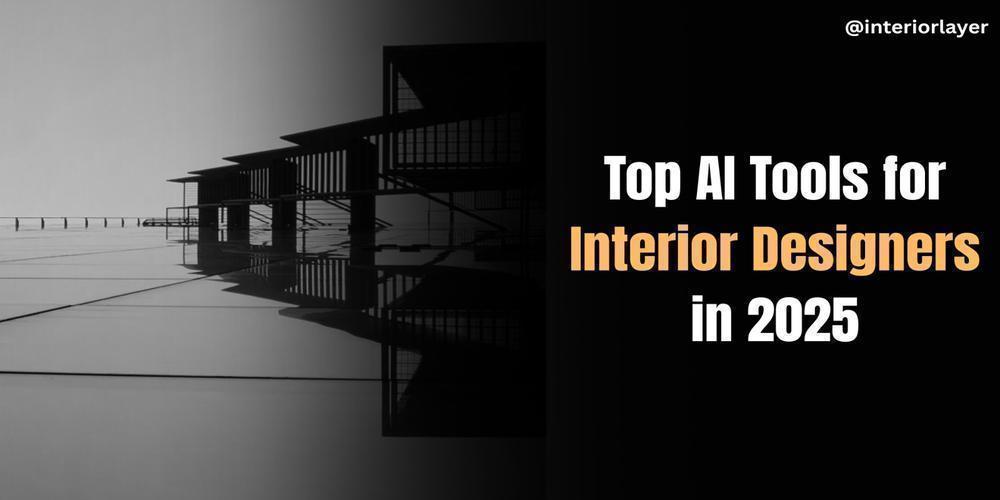

The intersection of technology and creativity has never been more exciting than it is in the world of interior design. As we step into 2025, AI in interior design has evolved beyond a mere trend; it's now a powerful necessity. From concept development to 3D rendering and client communication, AI tools for designers are streamlining workflows, boosting innovation, and transforming the entire design process.
Interior designers today are expected to deliver faster, more brilliant, and more visually compelling results. This demand has given rise to a new generation of digital tools that are not only intelligent but also incredibly intuitive. Whether you're a solo designer or a large studio, embracing these technologies is no longer optional—it's essential for staying ahead. Here's a detailed look at the top AI tools for interior designers in 2025 that are reshaping the creative landscape.
Known for its ultra-fast rendering speed, Coohom utilizes AI rendering for interior design, delivering hyper-realistic visuals in under five minutes. It also offers AI-powered scene styling and drag-and-drop furniture suggestions from global catalogs, making it an ideal solution for client walk-throughs.
SketchUp remains a favorite for 3D modeling, and its 2025 AI plugins now offer predictive design, automatic model adjustments, and style-based suggestions. Designers can utilize AI to automatically generate components, such as walls, windows, and furniture, based on selected themes or real-world inspiration.
While not a dedicated design software, Canva has evolved to include AI-generated design templates for client presentations, mood boards, and visual proposals. It's perfect for quick client approvals and online content, offering simplicity without sacrificing quality.
This tool stands out for its instant 3D layouts and AI-generated room styling. Upload a room photo or sketch, and Planner 5D will create a fully furnished 3D model with suggestions tailored to the room's size and lighting. It's a time-saving tool ideal for both professionals and design students.
Foyr Neo is a cloud-based AI interior design software that enables designers to draft floor plans, design in 3D, and produce photorealistic renders in minutes. Its AI-enhanced rendering tools adapt lighting, materials, and perspectives in real time, cutting down on hours of manual work.
RoomGPT has emerged as one of the most efficient AI tools for room transformation in 2025. All you need to do is upload a photo of your space, and the AI generates several styled versions instantly—from modern to minimalist, boho to industrial.
It's a favorite for clients who want to visualize multiple themes before committing to a design. As a designer, RoomGPT helps accelerate ideation and provides clients with a clear visual direction during the consultation phase.
Spacely AI is a next-gen platform that combines AI space analysis with automated layout suggestions. It's designed to assess architectural constraints, daylight flow, and user behavior patterns, then generate optimized design blueprints for residential and commercial interiors.
Spacely stands out for its real-time collaboration tools and ability to run multiple spatial simulations, making it ideal for designers managing complex projects or co-working with architects.
With its AI-powered 3D floor planner and virtual staging features, Homestyler is a user-friendly platform that continues to gain popularity in 2025. Designers can create floor plans, furnish rooms, and generate high-resolution visual walkthroughs within minutes. It also includes a vast product catalog from real-world brands, allowing you to design and shop simultaneously.
Whether you're working with clients remotely or showcasing ideas during presentations, Homestyler's drag-and-drop design tools and AI-enhanced space planning make it easy to produce polished, professional layouts quickly.
Conclusion
As the world of design continues to evolve, so must the tools we use. These top AI tools for interior designers in 2025 are not just time-savers; they're game changers. They enable professionals to deliver higher-quality work more efficiently, with less guesswork and greater precision. Whether you're drafting blueprints, crafting mood boards, or finalizing renders, AI can be your most powerful design partner.
Staying updated with the latest interior design technology trends and integrating AI-driven design tools into your workflow ensures you remain competitive and creative in a fast-moving industry. If you haven't explored these platforms yet, now is the perfect time to start.
Would you like a version of this blog adapted for Instagram or LinkedIn? I can also help convert this into an infographic or carousel!